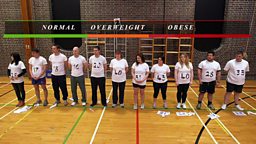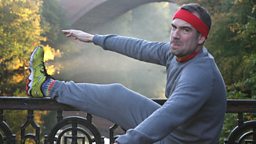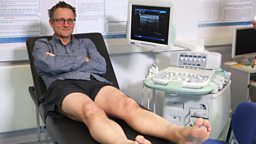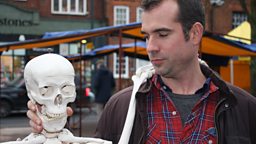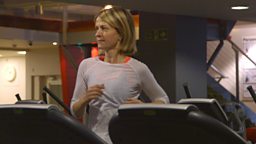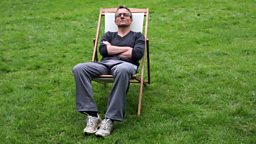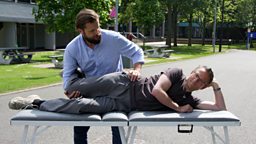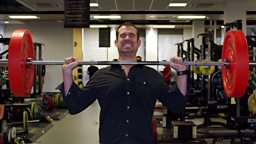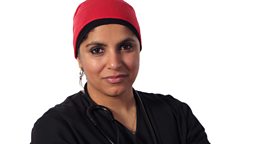Could having a hot bath give some of the benefits of exercise?
Many of us love nothing more than to soak in a hot bath in order unwind after a stressful or tiring day. Some studies suggest that getting hot in a sauna can improve your health. So could a hot bath be good for you too?
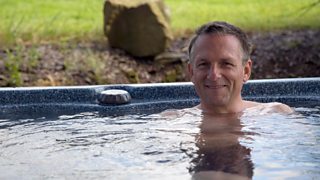
In 2015, a study from Finland suggested that men who went for a sauna only once a week had a higher risk of death compared to those who went two to three times a week. The more saunas the men had, the less likely it seemed they were to die from a heart attack or stroke.
Now, a sauna can make you hot and sweaty, just as exercise does. And we all know getting hot and sweaty in a gym can bring many health benefits.
But could it be that just getting hot – without doing any exercise at all – might bring us at least some of the benefits of exercise?
Trust Me, I’m a Doctor teamed up with Dr Steve Faulkner of Loughborough University to find out.
The experiment
Ten men (and Michael) volunteered to take part. Each had a one hour long 40 degree hot bath in a lab. Their body temperature was monitored throughout and it increased by about one degree.
The volunteers also did some cycling on a separate day – they cycled for an hour and at a pace that increased their body temperature by one degree – to match what happened during their bathing session.
Steve made each volunteer wear a mask which collected the air they breathed in and out, and from that he could calculate how many calories they were burning.
Each of the men was also fitted with a monitor to measure their blood sugar levels continuously throughout the experiment – including at mealtimes, when you expect blood sugar levels to peak.
Exercise improves our blood sugar control. Steve’s theory was that the hot bath could do the same.
Steve also tested the men’s blood for the levels of substances called heat shock proteins before and after the bath and the exercise. Heat shock proteins, as their name suggests, are released in response to heat stress. They are also released in response to exercise. Heat shock proteins appear to help with blood sugar control – Steve believes that simple exposure to heat might thus help take some of the sugar out of our blood stream and into muscle cells, where it can be stored or burned as fuel.
How many calories the volunteers burned

Spending an hour in the hot bath resulted in about an 80% increase in energy expenditure – they were burning on average 126 calories per hour. To put this into context, it equates to about a 25-30 minute walk at 3-3.5mph which is probably average for most people, or carrying light shopping, gardening or washing the car for the same period of time. Obviously compared to exercise this is a tiny increase (for example Steve measured about a 700% increase and 630 kcal/hr burned when they cycled) – but considering Michael could enjoy his book whilst having the bath (and some people cannot do physical activity) it is a significant result.
Blood sugar results

The amount our blood sugar rises after a meal – ‘peak glucose’ - is one of the potential risk markers for things like developing type 2 diabetes and metabolic disease. Keeping it down can therefore be good for our health. Peak glucose after the bath was slightly lower compared with peak glucose after exercise, which was completely unexpected (we saw about a 10% reduction in the peak glucose value following the meal after the hot bath, compared to exercise). Steve thinks that a hot bath may keep our muscle temperature more consistently warm than exercise, encouraging the release of the beneficial ‘heat shock proteins’ that can help lower blood sugar levels.
Heat shock protein results
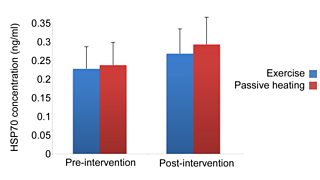
The results of this small pilot study suggest that passive heating can help burn calories and also help decrease peak blood sugar after the bath. It is possible that some of these benefits come from the heat shock protein response. Interestingly, people with obesity and diabetes tend to have a lower response to heat shock proteins, which suggests that they may be important in helping our bodies control our blood sugar levels.
Steve’s study only looked at the acute effects and didn’t look at the long-term effects of taking a hot bath. So do the benefits hold up in the long-term?
One small pilot study from 1999 had 8 type 2 diabetics use a hot tub for 30 minutes a day, six days a week, for three weeks. During the three-week period, the volunteers' average blood sugar level went down significantly, dropping more than 10%.
One recent 2016 study, investigated the effects of 8 weeks of repeated hot baths on 20 healthy, young and sedentary people. They found this significantly improved their heart health.
So, it seems likely that a combination of additional physical activity and passive heating (e.g. sauna, hot bath) may be good for people who can’t do more vigorous exercise. However, be aware that hot baths and saunas may not be suitable in some individuals with underlying heart issues or those who may not be able to control their body temperature properly, so it’s always worth consulting your doctor before you start visiting saunas and hot tubs.
It is also worth noting that hot temperatures can affect fertility in men, so if you’re trying for a baby then it might be worth putting saunas on hold for a while!
